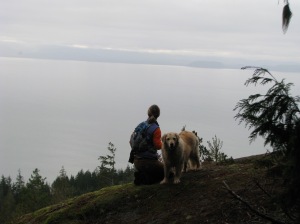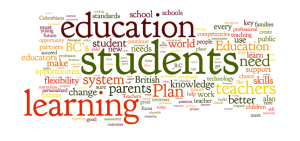I am smiling as I write this post, with my Mom’s beautiful face clearly in my mind. You see, I know that my Mom is usually one of the first to read my blog posts. And, I believe that she reads them from beginning to end; truly wading through the mire of my digital diary, not just skimming for salient details and points of interest.
Clive Thompson’s Chapter 8 “Ambient Awareness” in his book Smarter Than You Think became one of my favourite chapters, as I was reminded repeatedly of the opportunities and connections that technology has brought into our lives. Clive is a strong proponent of our micro-blogged status updates, our shared dinner pictures and our endless chatter about the minutiae of our days. He describes the wonder of our culture of over-sharing; how it becomes like an ongoing conversation. He actually describes it as social proprioception – an awareness of where our digital community members are, and what they may be engaged in: a group’s sense of itself. What is appealing about these morsels of shared information is that they invite you to interact; they do not demand your attention. When a friend shares out that they are considering which movie to watch on a Friday evening, you can experience a moment of envy about their evening plans and move your attention to other things, or you can offer an opinion and begin a conversation.
I admire people who can blend their personal and professional selves seamlessly online. They can share tidbits about their day, as well as professional resources that their followers will appreciate. My Twitter timeline shares a lot of my celebrations as a learner and a teacher, but I rarely sneak in the occasional personal tweet. I might enthuse about the snow falling, or how my dogs are demanding my attention as I multi-task through my schoolwork on my front deck.
Thompson made me laugh out loud when he talked about how our ambient awareness allows other people know how truly weird you actually are! He describes how freeing text can be. When I reflect on the people who follow my Twitter account and how they read my thoughts about my Masters, my ideas about teaching or my conversations with other people; I regain my fear about posting my words so publicly. It is bizarre to have a clear understanding of and sense of closeness with someone you have never met. Twitter allows us a new social opportunity that breaks the standard conventions of conversations. We drop into conversations held between other people, we leave without polite goodbyes, and we share out random facts, pictures, ideas, and conversation starters to see if anyone wants to talk to us. Our recent history is filled with stories of the dreaded evenings at family or friends’ homes where we may have been forced to sit through endless photo albums, or worse, a slideshow. Yet, Instagram has been embraced as a window into the lives of those around us. This is another example of being invited in, as opposed to feeling trapped.
Ambient awareness extends to everyone. Although we may be intending to share our words or pictures with a few friends in our digital community, we must remain aware that our true audience is huge. Future employers, friends or spouses can see our interactions, or trace our histories with a simple search. Our current employers, friends and spouses have an ongoing geo-tagged window into our every digital utterance. A new mindset of how to behave when we know someone is watching should be taught at a younger age. In discussing my “audience awareness” with my students at the advent of blogging together, I have learned that most of my students do not think about what it means to be interacting publicly.
After reading this chapter, and experiencing my ever-present anxiety of living this public life, I also acquired a new calm. Thompson’s rebuttal to the many people who mourn the use of our social networks to post random updates is that these tools do not actually make us trivial: they just reveal how trivial we truly are. I, for one, am grateful for all of the opportunities that technology has brought into my life. I do feel more connected – to the people I know well, and also to people I have yet to meet in person.
So, post away. Tell me about the dessert you just ate. Connect with me through Fitbit so that I may know how many steps you took today. Post another cute picture of your dog napping. Tell me the funny thing that happened at work today. Capture the beauty outside your front door in a quick pic. Tag me into that conversation about popcorn, because you know I have an opinion about that. What unexpected plot twists filled your day today?

Enjoying the view with my dog Ash. One of my favourite hikes behind my house.
Because, I know that if I shared these things more often, my lovely Mom would feel even more up-to-date in my day. I know that she would be happy to see how my elaborate dinner turned out. She would be able to picture me on my hiking trails vividly if I shared a picture in real time. She would laugh at my stories, even if no one else did. Our connection would deepen because she would be able to see the blend of my personal life and my professional life and how all of the pieces fit together in the course of each day.
Status update: I’m off to tidy my house so that I may decorate for Christmas tomorrow. 🙂


